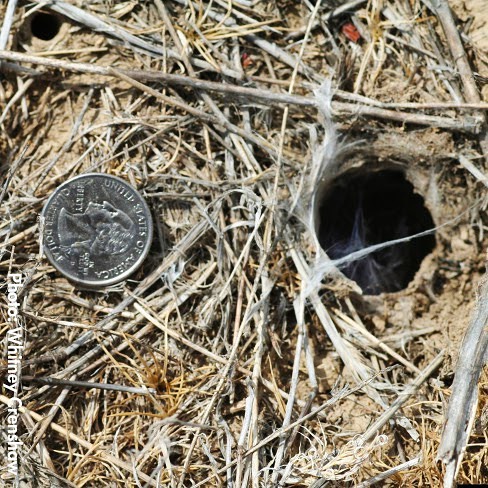Texas brown tarantula
When monsoon season descends upon West Texas, creating wetter and cooler conditions after a hot summer, our region’s tarantulas rise from their underground burrows. Texas brown tarantulas are long-living arachnids (males live around 10 years while females live 30 years plus), with furry brown bodies. Generally, tarantulas are solitary creatures that hide out in their cool, underground dens. The dens are marked by nickel-sized holes in the ground. In rocky soils, they often will burrow under rocks. Tarantula populations can reach concentrations of 200 dens per acre!
July to October is prime tarantula spotting time, as the male spiders seek out a female mate. A male tarantula’s journey to find a female is fraught– there are other males to compete with, cars, heat, and tarantula hawks. When a mature male, 6 to 8 years old, successfully locates a female, his pursuit isn’t yet complete. Like many animal species, the male must impress the female, which he does through a kind of pulsating dance or by creating rhythmic noise with his pedipalps (appendages near the fangs). Though uncommon, if a male takes a female by surprise, she may eat him; as such, males are careful to make their presence known by tugging on the web at the opening of the female’s burrow, as though knocking on her door. Once the female consents to reproduction, the male will use his pedipalp to place sperm in the female’s genital opening or he will wrap the sperm in a packet of silk and leave it with the female. The female then lays her eggs and puts them within her web to keep them safe. It is all very romantic!
Inspired by the webs spiders spin, this drawing exercise will challenge you to create a web on paper. Locate a drawing tool and paper. Using one continuous line and without picking up your drawing tool from the paper, draw a web that fills the entire page. Do this exercise a couple of times, experimenting with different kinds of lines. How does the web change when you use a thick line? A thin line? Curvy lines versus straight lines?




